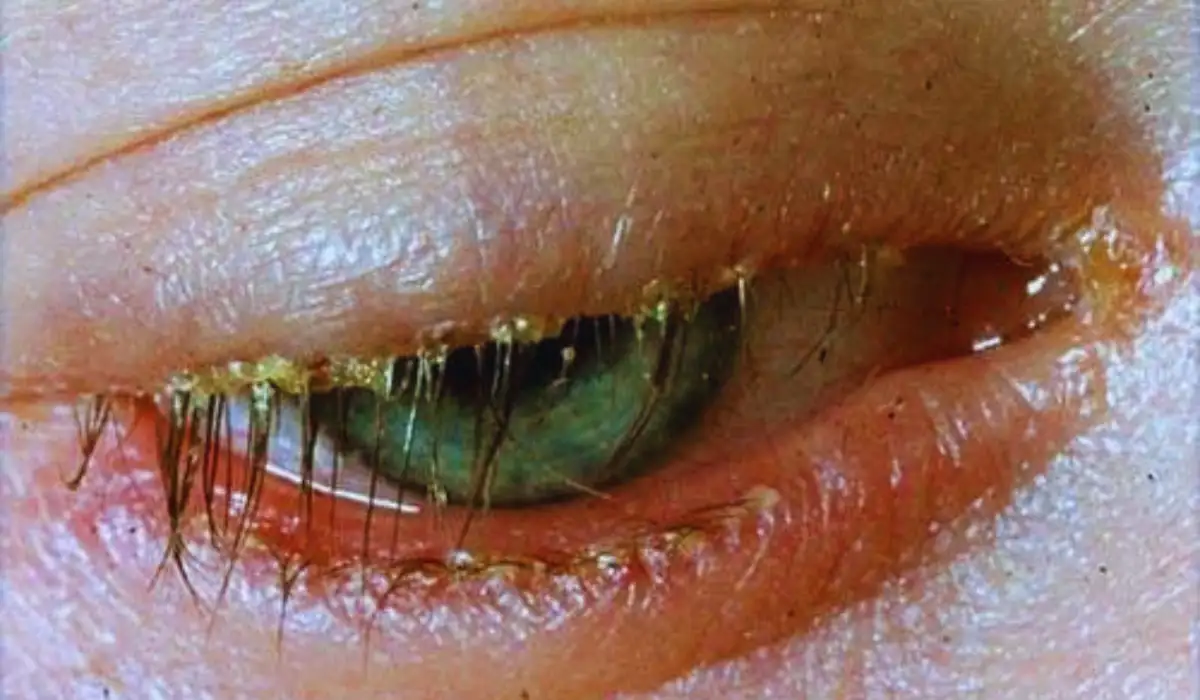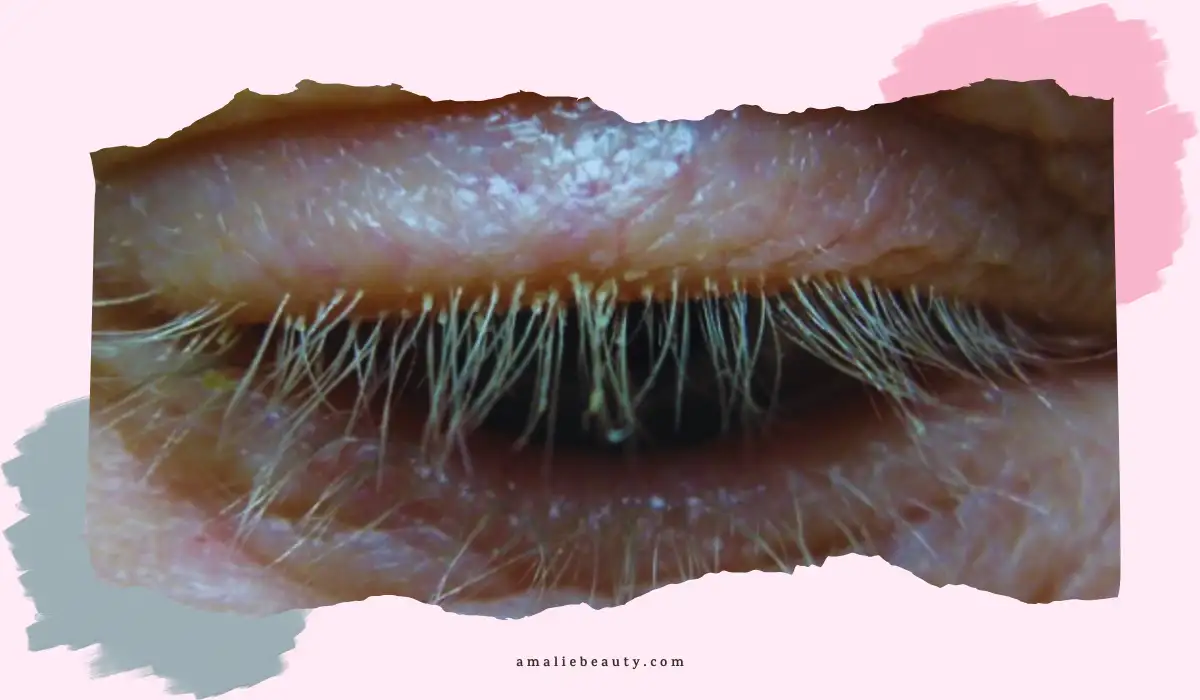Blepharitis, a common eye condition, can often go unnoticed, but it can have a significant impact on your visual comfort. However, eye health is of fundamental importance in maintaining optimal quality of life.
Conditions such as blepharitis, although often underestimated, can disrupt this precious visual clarity. By understanding eye health issues, we are better equipped to recognize and manage conditions like blepharitis. So let us see what the problem with this eye condition is.
What is demodex blepharitis?

Demodex is a microscopic ectoparasite of the class Arachnids and subclass mites that live within or near the hair follicles of mammals.
Around 65 species of Demodex have been recorded. Two species have humans as their host: Demodex folliculorum and Demodex brevis, known to be eyelid margin mites.
Pathophysiological mechanisms include direct damage, transport of surface bacteria such as staphylococcus epidermitis as well as a delayed hypersensitivity reaction.
Clinically, demodex blepharitis is associated with a series of clinical manifestations including changes in the eyelashes such as sleeves at their basis or crust or even trichiasis, dysfunction of the meibomian glands, inflammation and pigmentation of the free eyelid margin which can extend to the conjunctiva and cornea.
Blepharitis is an eye condition characterized by inflammation of the eyelid margins. This inflammation can be caused by a variety of factors, such as problems with the oil gland located in the eyelids, allergies, bacteria infections, or underlying dermatological conditions
Demodex and blepharitis
The role of Demodex in blepharitis is currently less consensual than that which it plays in acne rosacea.
The controversy over the causal link between their presence and symptoms is based on the one hand on the other fact that Demodex is found in many asymptomatic subjects, and on the other hand the correlation between the level of infestation and symptoms is not always firmly established.
Blepharitis manifests itself in two main forms: anterior blepharitis and posterior blepharitis
Anterior blepharitis mainly affects the outer part of the eyelids, where the eyelashes are implanted. It is often caused by bacteria or excessive oil production, which can lead to burning and eye irritation.
Posterior blepharitis, for its parts, affects the meibomian glands inside the eyelids, responsible for the production of lipids which prevent excessive evaporation of the tear film. Blockage of these glands can cause excessive tearing, dry eyes, and blurred vision.
Incidence and prevalence
Blepharitis is a common condition. It can affect individuals of all ages, although its frequency generally increases with age.
Due to its diversity of possible causes and sometimes subtle symptoms, blepharitis is often underdiagnosed and can persist for a long period if not treated properly.
A thorough understanding of this condition, its different types, and its implications on eye health is essential for appropriate management and for maintaining long-term visual comfort
Causes of Demodex blepharitis
Blepharitis can have a variety of courses, often resulting from a combination of factors.
➡️ Common causes
Common causes of blepharitis include:
- Eye hygiene problems
- Excessive sebum production
- Allergies
- Bacteria or fungal infections
- Debris, makeup residue, and bacteria can build up at the base of the eyelashes, causing inflammation at the eyelid margin
Risk factors Of Demodex Blepharitis
Several risk factors can predispose to blepharitis:
- Poor eye hygiene, such as insufficient eyelid cleaning, can lead to the buildup of dirt and bacteria
- People with rosacea, a chronic skin condition, are more likely to develop blepharitis
- Seborrheic dermatitis, a skin inflammation, is also linked to this eye condition
- People with a family history of blepharitis or other eye problems may be at increased risk
Demodex: watch your eyes!
Demodex is a microscopic parasite frequently present in humans. This mite lives mainly on the face. It is most often harmless.
However, sometimes demodex multiplies too quickly. This phenomenon can lead to problems with the skin, but also with the eyes
Associated diseases
Blepharitis is often associated with underlying diseases:
- Rosacea: It is characterized by facial redness and rashes, and can make blepharitis worse.
- Seborrheic dermatitis: It causes oily, scaly rashes, and can also contribute to posterior blepharitis.
It is important to note that individuals with these skin conditions are more prone to developing blepharitis, highlighting the importance of a comprehensive approach in treating these related conditions.
Symptoms of Demodex blepharitis
Common symptoms. Blepharitis symptoms can vary in intensity, but some signs are more common than others:
- Redness and irritation of the eyelid margin are common
- The itching
- Burning sensations
- Excessive tearing
- Scabs or scales may form at the base of the eyelashes
- Patients may also experience a foreign body sensation in the eyes, given a persistent feeling of discomfort
Possible complications
In addition to these symptoms, blepharitis can cause potential complications:
- A stye: an infection of a gland at the base of the eyelashes, can develop due to inflammation and bacterial buildup
- Conjunctivitis: an inflammation of the membrane that covers the surface of the eye, can also be triggered or exacerbated by blepharitis.
➡️ Effects on quality of life
Blepharitis can impact quality of life.
Troublesome eye symptoms can interfere with daily activities, such as reading, driving, and working on screen.
Sensitivity to light, tingling sensations, and blurred vision can impair visual clarity, affecting perception of the world.
Diagnosis of Demodex blepharitis
➡️ Eye exams
Diagnosis of blepharitis is based on thorough eye exams performed by an eye health professional, usually an ophthalmologist or optometrist.
During the examination, the practitioner carefully assesses the eyelid for signs of inflammation, redness, crusting, and other typical symptoms of blepharitis.
Tests may be done to assess tear quality and meibomian gland function. You can also make a teleconsultation appointment for more information
Prevention and long-term management
Prevention and long-term management are essential to avoid the recurrence of blepharitis.
Maintaining good eye hygiene, regular use of mild cleansing solutions, and regular consultation with an eye health professional are recommended.
It may be wise to identify and manage underlying risk factors such as rosacea or seborrheic dermatitis. With a comprehensive approach, blepharitis can be managed effectively, improving comfort and overall eye health
Conclusion
The eyes are often neglected by our daily hygiene practices. However, it is important to take care of it certainly during treatment for an ophthalmological condition, such as Demodex infestations, but also daily.
Daily eye hygiene is also essential to prevent several conditions. Daily cleaning using suitable products, such as impregnated wipes intended for this purpose, contributes to achieving and maintaining optimal eye health.
References
- Putnam CM. Diagnosis and management of blepharitis: An optometrist’s perspective. Clin Optom (Auckl) 2016;8:71–78.
https://www.ncbi.nlm.nih.gov/pmc/articles/PMC6095371/ - Shah PP, Stein RL, Perry HD. Update on the management of Demodex blepharitis. Cornea 2022;41:934–939.
https://pubmed.ncbi.nlm.nih.gov/34743107/

